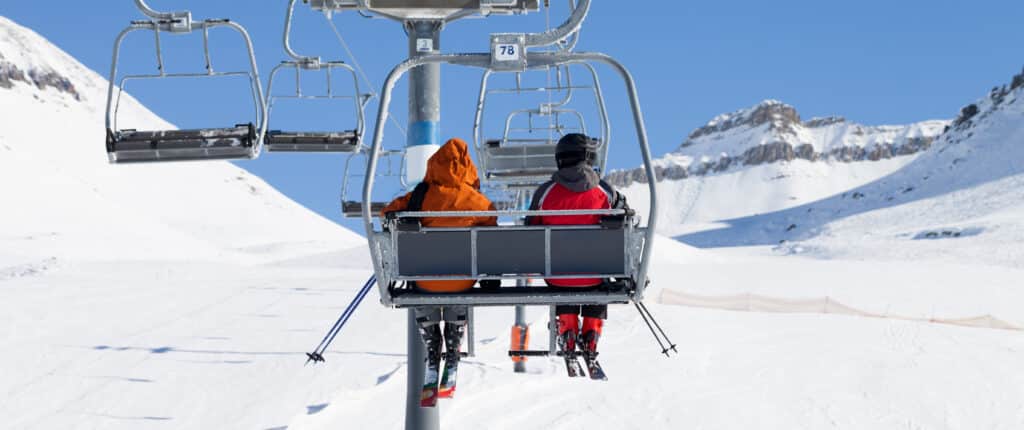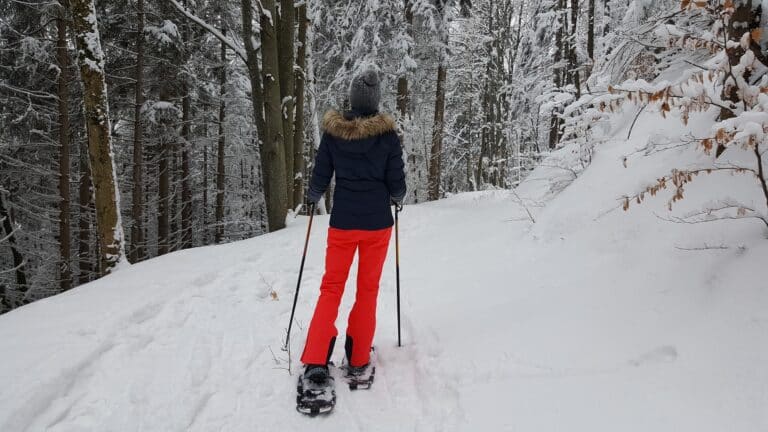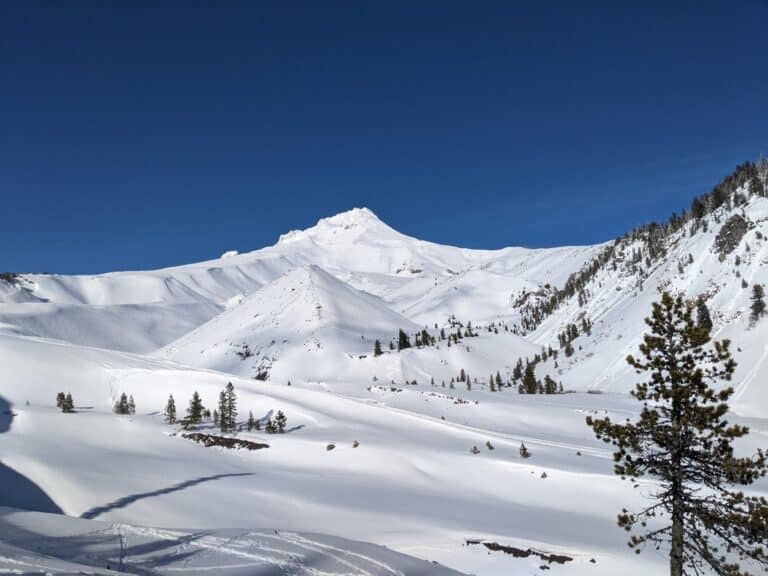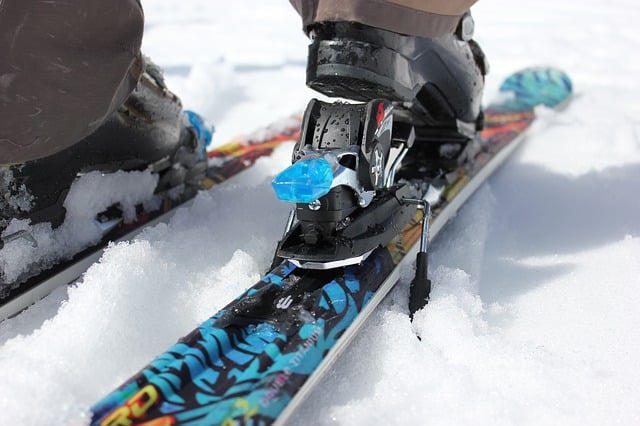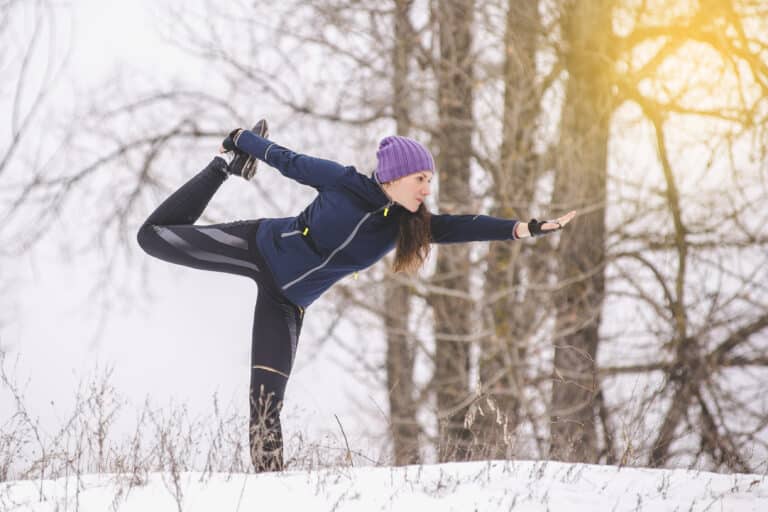Staying Cozy Out In The Cold: Insider Tips For Skiing

Our content may include affiliate links, through which we earn a small commission on purchases. Want to learn more about us? Read here.
As someone who easily succumbs to the cold and fears enduring any uncomfortably frigid days –this guide was created to ensure that even the most cold-sensitive individuals can enjoy everything winter offers this ski season.
Whether you’re gracefully carving down slopes on skis, touring backcountry lines, catching air on a snowboard, or peacefully exploring serene trails on snowshoes, the following recommendations are your key to embracing the winter chill with the assurance that warmth and comfort will be steadfast companions every step of the way.
Here, we provide insights and practical tips for mastering the art of staying warm while skiing.
Layering is Key

Start with a moisture-wicking base layer to keep the sweat away from your skin. Choose a base layer made of materials like merino wool or synthetic fabrics. Follow this with an insulating mid-layer like a fleece or synthetic down or down jacket.
Make sure to choose something with good mobility and a good bulk-to-heat ratio. Down jackets provide a lot of warmth with minimal bulk. Select outer layers that are waterproof and breathable to protect against wind and snow.
The outer shell should be sized to fit comfortably over all the other layers while allowing full mobility. A ski jacket with a powder skirt keeps the cold air out. When buying ski pants, consider bibs for extra warmth on your core.
Adjust and swap out layers based on the activity level of your adventure. Consider how our body temperature rises quickly while touring a ridge to access that perfect line. Alternately, long chair lift rides can zap away your heat quickly. Insulated ski pants and jackets may be preferable when resort skiing.
Pro Tip:
Think about the other outdoor activities you participate in and try to select versatile gear.
Choosing the Right Gear
Choosing materials and gear specific to your winter sport ensures a comfortable skiing experience. Opting for waterproof and windproof materials forms the first line of defense against the biting cold and chilling winds that characterize alpine environments.
Technical and specialized fabrics act as a barrier, preventing moisture from snow or external elements from getting in and blocking the intrusion of icy wind gusts. Avoid cotton as it retains moisture from snow or sweat and takes a long time to dry..
The second crucial element in the battle against the coldest conditions is breathability, an often overlooked but greatly important factor for effective moisture management. Breathable materials allow perspiration to escape and prevent sweat build-up within layers while minimizing the risk of chilling due to damp clothing.
Finally, the significance of proper sizing cannot be overstated. Skiing demands a balance between mobility and insulation while wearing many layers. Well-fitted gear should offer unrestricted movement while creating air pockets that enhance warmth.
Achieving the right equilibrium in material choice, breathability, and sizing is the key to conquering the cold on the slopes, allowing you to glide effortlessly while staying comfortably warm.
Pro Tip:
Before buying new gear, be sure to try it on along with all the other layers you would wear. If you didn’t bring yours, find something similar in the ski shop to use.
Hand and Foot Warmth
Staying cozy on cold days starts with keeping your hands warm. Find an insulated ski glove or mitten that is highly rated for warmth at low temperatures and has enough wiggle room for your fingers. If you are in a wetter climate, select a waterproof option or materials such as gore-tex.
Look for gloves or mittens with removable liners that can be removed for quick drying. Another benefit of this glove style is the option of inserting a hand warmer between the shell and liner layer. Buy gloves with a longer gauntlet-style cuff, which typically has more insulation that extends past the wrist and has a drawcord to seal out the cold.
If you have difficulty keeping your toes warm on chilly days, there are many ways to add warmth. Start by choosing ski socks that extend above your boots but maintain a moderate thickness; overly thick socks can lead to colder feet if they compress your boots too tightly and limit blood flow.
Always try on ski boots with the ski socks you plan to wear to ensure mobility and comfort. Some socks have added padding at the shins for enhanced comfort and warmth. Opt for wool or synthetic materials over cotton, as cotton socks tend to retain moisture from snow or sweat, prolonging the drying process and increasing the risk of discomfort.
Consider battery-powered electric socks or single-use toe warmers that adhere to the top of your foot.
Pro Tip:
Pair toe warmers with an exterior boot glove for maximum warmth and added protection against cold feet.
Head, Face and Neck
Protecting the head, face, and neck from the biting cold by limiting exposed skin is crucial for a comfortable and enjoyable experience. Helmets, besides offering head protection on the slopes, contribute significantly to heat conservation. Pair with a neck gaiter, face mask, and beanie to warm your head.
They shield the face from frosty winds and provide an extra layer of warmth for the neck. Consider full face masks that have ventilation for breathing to limit moisture accumulating on the material.
Other face masks that pull down easily are a good option to limit the time you are breathing through the material. Pairing your helmet with well-fitting goggles provides comprehensive coverage to stay warm while skiing.
Pro Tip:
Wear two layers on your neck to prevent breathing condensation from chilling you. The outer layer shields the cold while the inner layer will wick sweat and moisture.
Take Breaks
Taking breaks while skiing is key to staying warm and having an enjoyable skiing experience. The physical demands of skiing and exposure to cold temperatures can lead to fatigue, affecting concentration and overall performance. Breaks provide a valuable opportunity to warm up, rest and recharge.
It’s also a good time to swap wet layers or foot warmers. Plus, hot chocolate is a no-brainer way to stay warm.

Taking breaks is not a mere interruption of the skiing experience; it is a deliberate and beneficial practice contributing to safety, enjoyment, and overall well-being on the slopes. Skiers should view breaks as an integral part of their skiing routine, ensuring that they make the most of their time in the winter wonderland while prioritizing both physical and mental health
Pro Tip:
Bring a thermos with a hot drink to enjoy while on a break or on your ride home at the end of the day.
Carry Extra Gear
In addition to dressing for warmth on a cold day, it’s a good idea to carry extra gear in case you need to add some layers or share with your ski buddies in need.
Hand and Foot Warmers: Hand and toe warmers are small and portable, and it’s easy to throw an extra set in your pocket to share in the lift line.
Insulated Water Bottle: Staying hydrated is crucial in cold environments, and having an insulated water bottle helps prevent liquids from freezing. A hot drink during breaks can be incredibly comforting.
Face Masks or Buffs: Protecting your face from biting winds is essential. A face mask or a versatile buff can shield your skin from the cold, ensuring added warmth and preventing windburn.
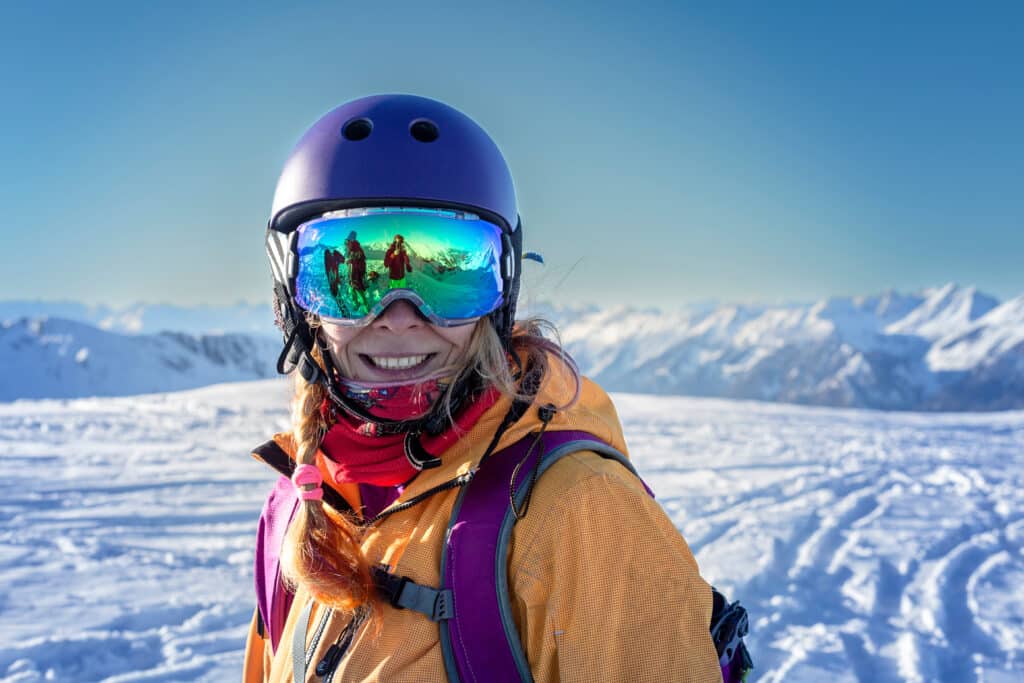
Additional Layers: Bringing an extra layer or more, such as a lightweight down jacket or a fleece vest, allows for easy adjustment to changing weather conditions. Layering provides flexibility, enabling you to adapt to temperature variations throughout the day.
Spare Gloves or Mittens: Wet gloves can quickly lead to discomfort and cold hands. Carrying an extra pair allows you to switch out damp gloves for dry ones, ensuring warmth and dexterity.
Car Kit: A winter driving kit is mandatory when traveling through areas where inclement weather is expected. Include other accessories like your favorite down blanket or a battery-powered blanket to make that drive home warm this ski season.

Including these items in your ski gear kit enhances your warmth and comfort and ensures you’re well-prepared for any conditions. Being equipped with the right gear lets you focus on skiing on a cold day.
Pro Tip:
Keep your extra gear bag packed between ski trips and ready to go so you are prepared to stay warm while skiing.
Conclusion
This guide aims to empower even the most cold-sensitive adventurers to thrive in winter’s embrace and staying warm while skiing. By applying these practical tips and insights, you’re not just preparing to stay warm but also unlocking a new level of enjoyment and appreciation for the winter season.
Whether carving down ski slopes, navigating the backcountry, snowboarding with gusto or tranquility traversing snowshoe trails, remember that the cold is no longer a barrier but a part of the beautiful winter tapestry. Embrace each moment with confidence, knowing that warmth and comfort are now your allies in every snowy adventure.
See you on a chair!
